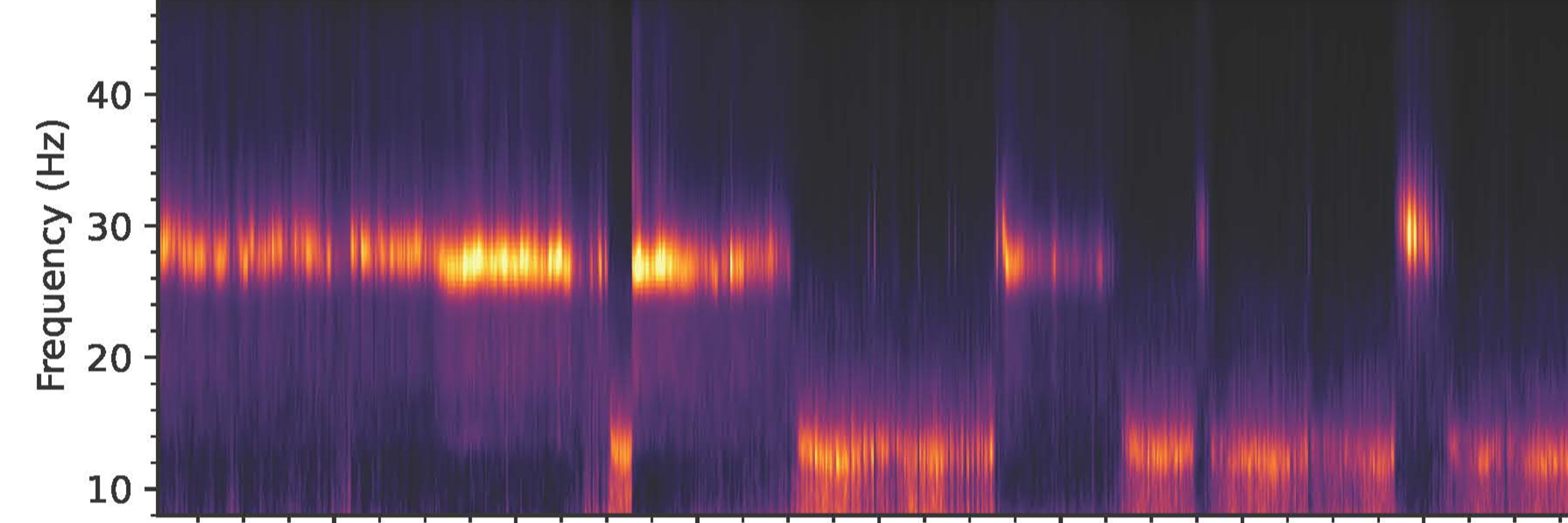
Tobias Staudigl
@tobiasstaudigl.bsky.social
Cognitive neuroscientist | Prof @LMU_Muenchen | Memory, Navigation, Sleep, Eye Movements, Thalamus | iEEG, EEG, MEG, DBS | https://www.lmu.de/psy/en/chairs/neuropsychology-and-biological-psychology/cognitive-neuropsychology/
Also on the way to #ICON2025 in beautiful Porto?
Check the lab’s latest work:
@xiongbowu.bsky.social: Talk in SY16, Tuesday 9.00, room Boavista;
Aditya Chowdhury: Poster P1.11, Tuesday 10.45
@julia-sc.bsky.social: Poster P3.18, Wednesday 10.45
@tafgmcb.bsky.social: Poster 4.32, Wednesday 15.30
Check the lab’s latest work:
@xiongbowu.bsky.social: Talk in SY16, Tuesday 9.00, room Boavista;
Aditya Chowdhury: Poster P1.11, Tuesday 10.45
@julia-sc.bsky.social: Poster P3.18, Wednesday 10.45
@tafgmcb.bsky.social: Poster 4.32, Wednesday 15.30

September 15, 2025 at 12:16 PM
Also on the way to #ICON2025 in beautiful Porto?
Check the lab’s latest work:
@xiongbowu.bsky.social: Talk in SY16, Tuesday 9.00, room Boavista;
Aditya Chowdhury: Poster P1.11, Tuesday 10.45
@julia-sc.bsky.social: Poster P3.18, Wednesday 10.45
@tafgmcb.bsky.social: Poster 4.32, Wednesday 15.30
Check the lab’s latest work:
@xiongbowu.bsky.social: Talk in SY16, Tuesday 9.00, room Boavista;
Aditya Chowdhury: Poster P1.11, Tuesday 10.45
@julia-sc.bsky.social: Poster P3.18, Wednesday 10.45
@tafgmcb.bsky.social: Poster 4.32, Wednesday 15.30
You might also be interested in this paper from 2022, where we simoultaneously recorded intracranial thalamic and MEG data in humans to investigate how thalamo-cortical interactions predict visual perception:
www.nature.com/articles/s41...
www.nature.com/articles/s41...
![Successful detection of a visual stimulus correlates with several neural phenomena: (1) the stimulus being presented at the optimal, low-frequency phase of ongoing medial prefrontal activity (mPFC in purple; hits in red; misses in grey), (2) the stimulus being presented at the optimal, low-frequency phase of ongoing mediodorsal thalamic activity (mediodorsal thalamus in aqua; hits in red; misses in purple), and (3) directed prefrontal-to-thalamic low-frequency connectivity (hits in red; misses [which displayed undirected connectivity] in grey]). Critically, the contribution of the prefrontal cortex to visual detection appears to be mediated by the mediodorsal thalamus.](https://cdn.bsky.app/img/feed_thumbnail/plain/did:plc:lsoubvpmlmcez2dbuf5m25tz/bafkreicj5jmimft77bhpkilenncbq4kyb7awuqegqewhev2grf6risle5a@jpeg)
April 4, 2025 at 7:31 AM
You might also be interested in this paper from 2022, where we simoultaneously recorded intracranial thalamic and MEG data in humans to investigate how thalamo-cortical interactions predict visual perception:
www.nature.com/articles/s41...
www.nature.com/articles/s41...
yup, could mirror the strong anatomical connections between central thalamus and frontal regions described in animal models. functional connectivity with scalp eeg shows state-dependent elevated connectivity in the specific frq band, but not region-specific.

January 31, 2025 at 1:44 PM
yup, could mirror the strong anatomical connections between central thalamus and frontal regions described in animal models. functional connectivity with scalp eeg shows state-dependent elevated connectivity in the specific frq band, but not region-specific.
Agree! A thalamic origin of a cortical rhythm picked up by scalp EEG could be plausible. In our data, however, modulation of scalp power in the frq band of the thalamic oscillation was not obvious on the group level (see below), just like in the non-invasive EEG data you referred to (Snipes, 2024).

January 31, 2025 at 12:22 PM
Agree! A thalamic origin of a cortical rhythm picked up by scalp EEG could be plausible. In our data, however, modulation of scalp power in the frq band of the thalamic oscillation was not obvious on the group level (see below), just like in the non-invasive EEG data you referred to (Snipes, 2024).
The novel oscillation is specific to microstates within REM sleep. Phasic REM, but not tonic REM, is tightly linked to the oscillation: bursts of the thalamic oscillations co-occur with eye movements during REM sleep.

January 29, 2025 at 3:05 PM
The novel oscillation is specific to microstates within REM sleep. Phasic REM, but not tonic REM, is tightly linked to the oscillation: bursts of the thalamic oscillations co-occur with eye movements during REM sleep.
The novel oscillation is remarkably consistent and its presence is robust across the cohort. We clearly identify it in Central Thalamus, but not in other thalamic nuclei.

January 29, 2025 at 3:05 PM
The novel oscillation is remarkably consistent and its presence is robust across the cohort. We clearly identify it in Central Thalamus, but not in other thalamic nuclei.
We find that human Central Thalamus is synchronized via a clear and persistent brain-state-specific oscillation which only occurs in wakefulness and REM sleep.
The figure shows the novel oscillation (~30 Hz) during wake and REM. In NonREM, the well known sleep spindles dominate.
The figure shows the novel oscillation (~30 Hz) during wake and REM. In NonREM, the well known sleep spindles dominate.

January 29, 2025 at 3:05 PM
We find that human Central Thalamus is synchronized via a clear and persistent brain-state-specific oscillation which only occurs in wakefulness and REM sleep.
The figure shows the novel oscillation (~30 Hz) during wake and REM. In NonREM, the well known sleep spindles dominate.
The figure shows the novel oscillation (~30 Hz) during wake and REM. In NonREM, the well known sleep spindles dominate.

